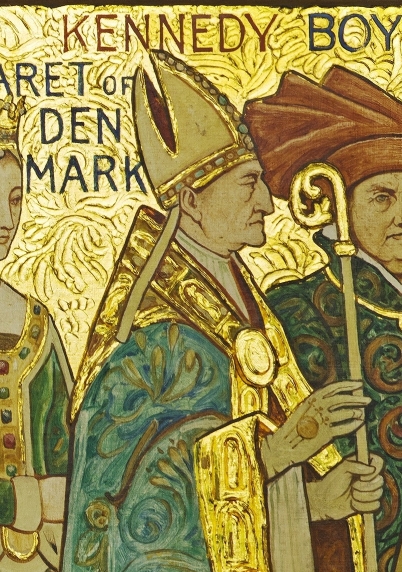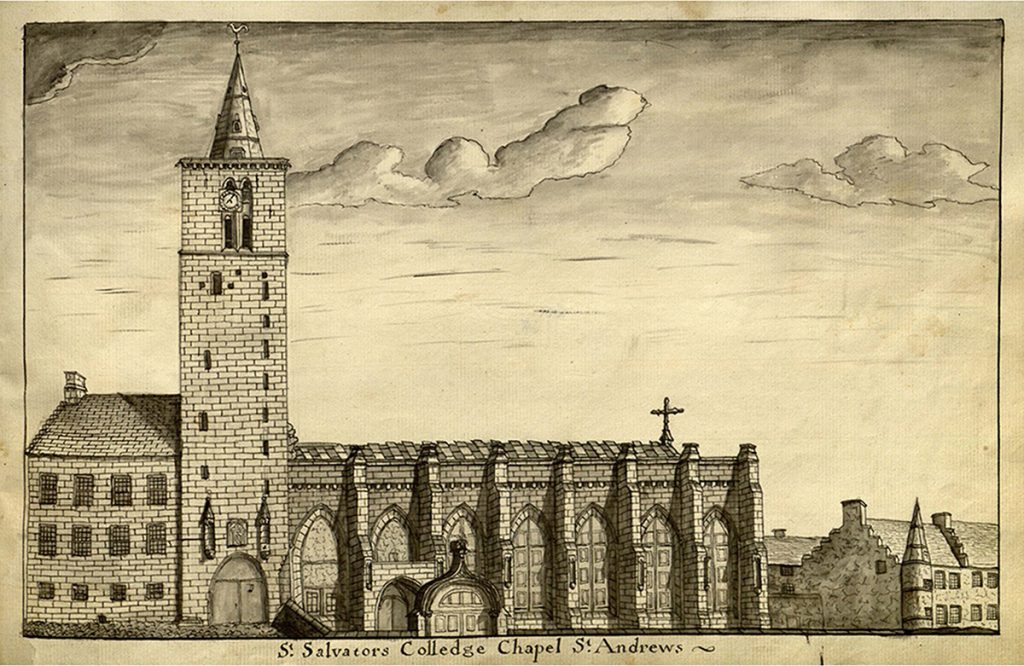James Kennedy, Bishop of St Andrews (c 1408 – 1465)
Kennedy the Churchman
James Kennedy was a son of Sir James Kennedy of Dunure, Ayrshire and Princess Mary of Scotland, daughter of King Robert III. Little is recorded of his early life beyond the fact that he was educated for the Church, and, while still a young man, was appointed to the See of Dunkeld. In his two years there he was an energetic reformer of some of the more flagrant abuses which had crept into the Church.
On the death in 1440 of Bishop Wardlaw, founder of the University of St Andrews, Kennedy was appointed Bishop of St Andrews, the most prestigious Scottish See. As well as being an able administrator, Kennedy devoted much time to his pastoral duties. Regular visits were made to every parish in his diocese, where, as well as preaching the gospel to the poor, he exhorted his clergy to be diligent in the discharge of their duties. His administration also saw a weakening of the bigotry that had characterised the Wardlaw regime, when followers of the early Reformer John Wycliffe, had been readily consigned to the flames.
Kennedy the Politician
Bishop Kennedy’s influence extended well beyond the Church and he was regarded as one of the ablest statesmen of his time. He was an active participant in the Scottish parliament and played a central role in trying to stabilise a turbulent political climate in which different factions of the nobility struggled for power during the minority of James II. He was appointed Chancellor of Scotland in 1444, but resigned this position after a few weeks, having found that his duties interfered with his ecclesiastical work. In 1446 he made a journey to Rome in an effort to heal the schism in the Church that had resulted in two Popes – one in Rome and the other in Avignon. Kennedy failed in this endeavour, but returned to a leading role in Scottish politics after the death of James II in 1460, as one of seven Regents during the minority of James III.
Kennedy in St Andrews
Bishop Kennedy was a generous benefactor of education, religion and commerce in St Andrews and left three great monuments. The first was St Salvator’s College, founded in 1450 and still at the core of the University. The second, the monastery of the Greyfriars, no longer in existence, but whose name is preserved in Greyfriars Garden in the town centre. The third beneficence took the form of a splendid ship, known as the St Salvator, or the Bishop’s Barge. Believed to have been one of the finest vessels of its day, it was wrecked on the English coast in 1472.
Link with Cellardyke
Bishop Kennedy built a magnificent house for himself near Skinfast Haven, the historic name for Cellardyke Harbour. Known as the Bishop’s House until it was demolished in the 19th century it stood opposite the twin flight of steps that today lead down to the quayside. The park belonging to the Bishop’s House was eventually built upon, creating Pigeon Park Lane, now known as Dove Street.
Kennedy’s Legacy
Bishop Kennedy’s most enduring physical legacy is the imposing St Salvator’s Chapel, with its imposing tower, which to this day dominates the St Andrews skyline, and in which his magnificent tomb still stands. He was also remembered both as an enlightened churchman and as a capable statesman. A century after his death that dedicated Protestant George Buchanan said that Kennedy excelled all his predecessors and successors in the See of St Andrews and praised his zeal for reform.




